This is a free fortnightly newsletter about the New Zealand Net. If you would like to be notified by email when a new edition is published, please contact ZL1NZ.
Browse our Newsletter Archive and List of Net Tips.
Featured key
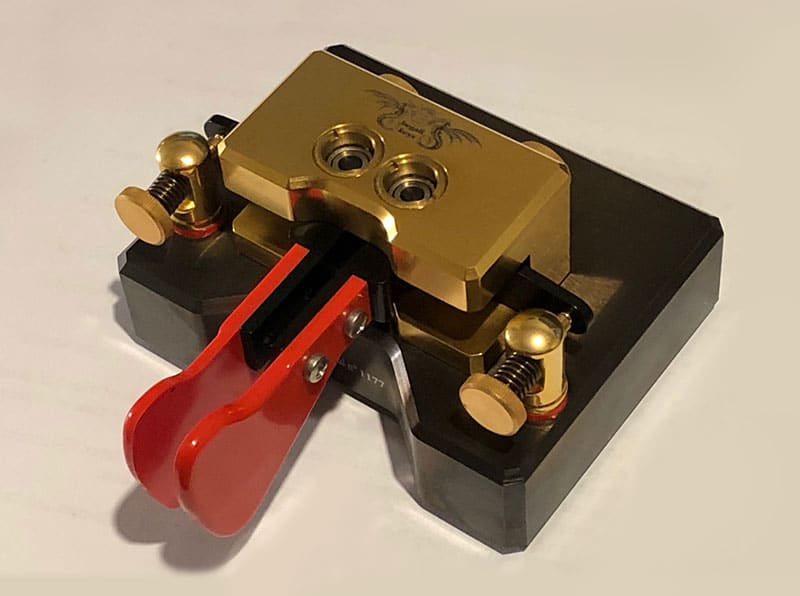
Begali Magnetic Classic paddles. Photo: ZL2GD
By Grant ZL2GD
I bought a Begali key in 2017 as a present to myself. I think at the time I was contemplating retirement down the track and I had been lusting after a set of paddles that would stay put on the table and use a magnetic return. I had been using a set of Bencher paddles which were really good but had a tendency to move around on the bench sometimes. (These have now been consigned to Field Day use.)
The Begali paddles are wonderful to use and I feel quite spoilt to own a set.
I purchased them from the Australian agent, RF Solutions. They arrived in a very well packed box with a special note from the owner of the company, Pietro Begali I2RTF.
The Magnetic Classic weighs 1.699 kg so it stays put even on a slippery smooth surface. Begali makes a range of keys, paddles and semi automatic paddles (bugs). The machining and quality of these units is excellent. I think this one will last a life time.
* If you have an interesting key for this feature, please send me a nice clear photo and a few words describing it.
Quick notes
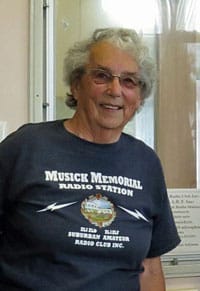 Ann Walker ZL1BFB died in Auckland on 26 August, age 83, following a short illness. For those who did not know her: Ann was a founding member of what is now the Musick Point Radio Group. She and her husband Ian (who previously held the same callsign and became a SK in 2010) were instrumental in saving the Auckland Radio ZLD receiving station at Musick Point, and retaining it as a radio facility, albeit now on the amateur radio bands. Ann was a mainstay at Musick Point until a few months before her death and she will be sorely missed by all of us who knew her.
Ann Walker ZL1BFB died in Auckland on 26 August, age 83, following a short illness. For those who did not know her: Ann was a founding member of what is now the Musick Point Radio Group. She and her husband Ian (who previously held the same callsign and became a SK in 2010) were instrumental in saving the Auckland Radio ZLD receiving station at Musick Point, and retaining it as a radio facility, albeit now on the amateur radio bands. Ann was a mainstay at Musick Point until a few months before her death and she will be sorely missed by all of us who knew her.
Dave ZL75BRL in Dunedin has his remote-access technology working again and it is good to have him back on the Net.
The Radio Security Service Memorial Amateur Radio Club in the UK commemorates the activities of the RSS during World War Two. About 1500 radio amateurs served as Volunteer Interceptors, logging mysterious radio signals at all hours of the day and night, and sending their reports to RSS headquarters for analysis. There is an interesting article about the Club in the latest K9YA Telegraph (subscriptions are free). You might also like to join the RSSMARC (that’s free too) to get notifications of their on-air and online activities.
The UK’s favourite television theme music is inspired by Morse Code. Listeners of Classic FM and readers of Radio Times have this week chosen the music from the Inspector Morse series, by Australian composer Barrington Pheloung, as their favourite TV music of all time. The theme employs a Morse Code motif to spell the name MORSE. The crime drama had a strong musical theme throughout, with John Thaw’s brilliant portrayal of the world-weary, classical music-loving detective. Hear the music.
The annual CW Open series of contests is this weekend. Run by CW Ops, the series comprises three 4-hour contests, scored separately, as well as overall winners. Logs must be in Cabrillo format.
Our Net tip, near the end of this newsletter, contains important information about a slight change to the NZ Net procedures, and I urge all ops to read it – whether or not your are a traffic handler. Thanks.
Net numbers
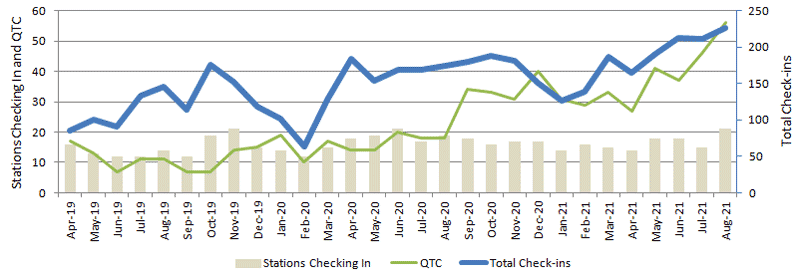
In August, the NZ Net set records for total check-ins (227) and total radiograms handled (56), both numbers being well above the previous records. The number of stations checking in at least once during the month was equal to the record. Here is the monthly report, as transmitted to All Stations on 1 September:
NR74 R ZL1NZ 51/48 AUCKLAND 0900Z 1SEP21 = NZ NET = AUG QNI ZL1AJY 9 ZL1ANY 18 ZL1BWG 20 ZL1GQ 1 ZL1NZ 22 ZL1PC 1 ZL2APV 1 ZL2GD 20 ZL2GVA 18 ZL2KE 14 ZL2LN 9 ZL2WT 9 ZL3RIK 1 ZL3RX 1 ZL3TK 22 ZL4CU 4 ZL4FZ 4 ZL4KX 16 ZL75BRL 4 VK3DRQ 22 VK4PN 11 TOTAL 227 QTC 56 = ZL1NZ
Photo flashback
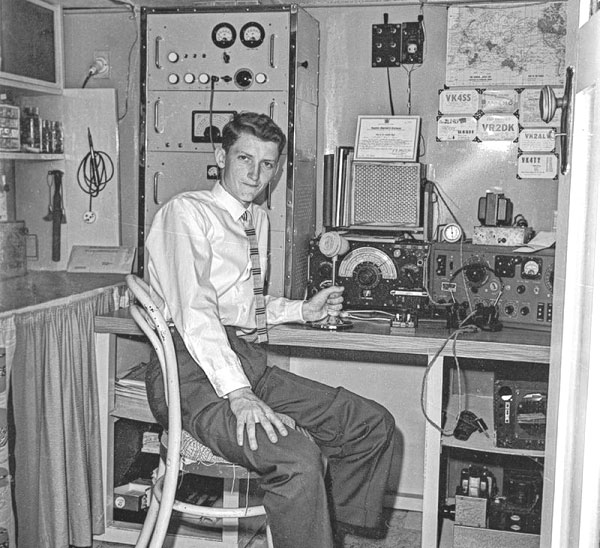
Errol Burr in New Plymouth in 1963 with his homebrew transmitter, Marconi R-1155 receiver and ZC1 Mk1 Type 3 transmitter/receiver. Photo: Swainson’s Studios, collection of Puke Ariki, New Plymouth
Errol Burr ZL2FM of Gisborne died on 1 Aug, age 75. His father, Jack Burr, was a keen amateur, and Errol became proficient in Morse Code and got his ham licence while still in his teens. As long as Jack Burr lived, he and Errol had a regular Friday morning catch-up on air. When Errol left school, he became a radio inspector with the Post Office. This took him to the Musick Memorial Radio Station at Bucklands Beach, Auckland, and to Wanganui for short spells before he was transferred to Gisborne in the early 1970s.
Aussie broadcaster features Morse Code
Chris Chapman VK3QB, the president of FISTS Down Under, was interviewed on ABC Radio Canberra a few days ago:
Audio courtesy ZL2WT
Hammer key gives your signal more impact
Is your signal getting pounded by QRM and QRN? Do you wish you could drive straight through the pileups and nail those rare DX stations? Good news! Now you can give your signal Maximum Impact with a Hammer-Down key.
Maybe you send with a swing? No problem – this key loves to be swung, the harder the better.
Plus, when you finish working a contest, you can use it to build a nice new operating desk. (Chances are you’ll need one, especially if your aim is poor.)
Remember: “when you’ve got a Hammer-Down, everything looks like a nail.”
(This key was made by Dan KF4AV for a recent SKCC homebrew key competition.)
Originating message traffic – part 2
In NZ Net News 62, we featured Part 1 of an article by David Fell W3TN, published in QST more than 60 years ago.
Here is the second part of that article, which includes some useful ideas on how to originate message traffic:
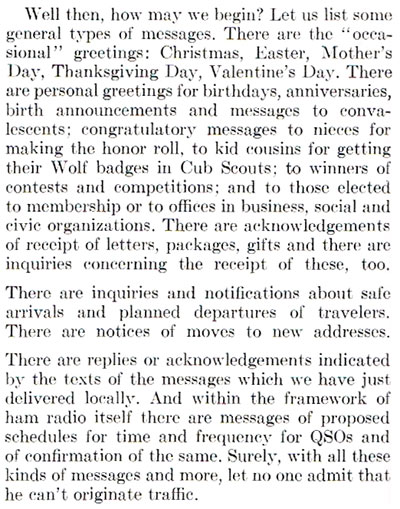
QST magazine, Dec 1958
The original article included lots of advice on how to generate 3rd party traffic, which was very popular in North America in the days of high telephone charges, but is probably not relevant to today’s amateur radio scene. I have, therefore, omitted it from this extract.
Video: PCH Scheveningen Radio
I always love seeing those RCA AR-88 receivers in action. ZL2GVA may be feeling homesick now. 🙂
NZ Net quiz: What am I?
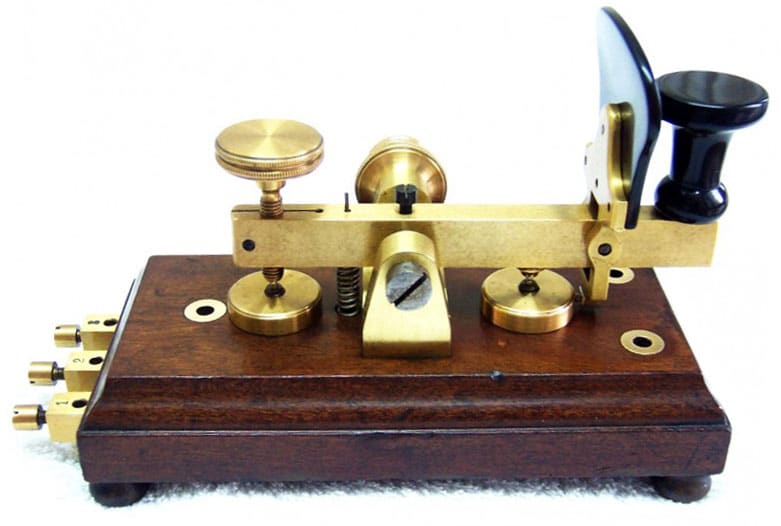
Question: What is the purpose of the object immediately in front of the knob on this straight key?
Bonus points if you know the manufacturer of the key.
Please send your answer(s) via radiogram to ZL1NZ.
= = =
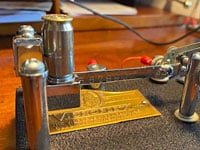 In our previous newsletter, I asked if you could identify the item shown here.
In our previous newsletter, I asked if you could identify the item shown here.
The photo is from Jim K7IOL, who says:
“I bought a 1956 Vibroplex Lightning Bug for fun. Initially it was quite a bit faster than me. I slowed it down with an empty 45acp shell and a 200 gr. Led projectile placed in it upside down, flat side up. It weighs .7 ounces and fits snugly enough over the knurled screw of the stock weight (.8 ounce, so 1.5 ounces total) that I can use it to tighten or loosen it to move the weight along the arm. Almost looks like it belongs there, and slows the bug down to about 15 wpm.”
Net tip: More about QNY
It is wonderful to see how popular the NZ Net has become – and how much traffic is being passed in each session. One of the consequences, however, is that nets often last well beyond half an hour.
To keep things running efficiently, Net Control Stations will next week begin directing some stations to QNY (move to another frequency to clear their traffic), after which those stations will return to the Net and check in again.
This is a longstanding and successful approach used on traffic nets. When NZ Net began, most ops had little experience with nets or traffic handling, so we started with a simplified format. Over the past two years we have gradually introduced more sophisticated techniques and encouraged ops to develop more advanced skills.
Introducing QNY is the logical next step for us. I wrote about it in NZ Net News 55, and I hope you will take this opportunity to review how it works before reading further for some additional information.
OK, you should now know how QNY works. Here is an example of how it sounds. The audio has been edited to save time. The QNY instruction is at 2:15 of the recording. In the second part of the recording, you will here the stations returning to the Net after they have cleared their traffic.
In the example above (“ZL2GVA QNY U2 ZL1ANY”) ZL2GVA was asked to go up 2 kHz and send his traffic to ZL1ANY. If ZL1ANY also had traffic for ZL2GVA, he would have taken the opportunity to send his traffic after getting the traffic from ZL2GVA.
When returning to the Net, stations should check in with their sine, as usual. NCS will acknowledge each station in turn, like this:
[ZL2GVA] VA [NCS] VA [ZL2GVA] ZL2GVA QNI [NCS] R <AS> [ZL1ANY] A [NCS] A [ZL1ANY] ZL1ANY QNI [NCS] R <AS>
By sending QNI, each station indicates that their traffic has been cleared. If it hadn’t been, then they could instead relist it when returning to the Net.
For now, NCS will only ask stations to QNY during the first 5 minutes of the Net. (If we were to do it later, we would risk not having stations back on frequency for any QNC.)
You can help your NCS operators by doing the following:
- If you have traffic: Check in during the first 5 minutes of the net. But, if you’re late arriving for the Net, then of course check in with your traffic at any time.
- If you do NOT have traffic: Let the stations with traffic check in first (if you hear no one checking in, then go ahead).
It is possible that in future we may first call for check-ins with traffic, before taking general check-ins, but we will not do that until people are comfortable with doing QNY.
If you have any questions, give me a shout.
Advertising archive
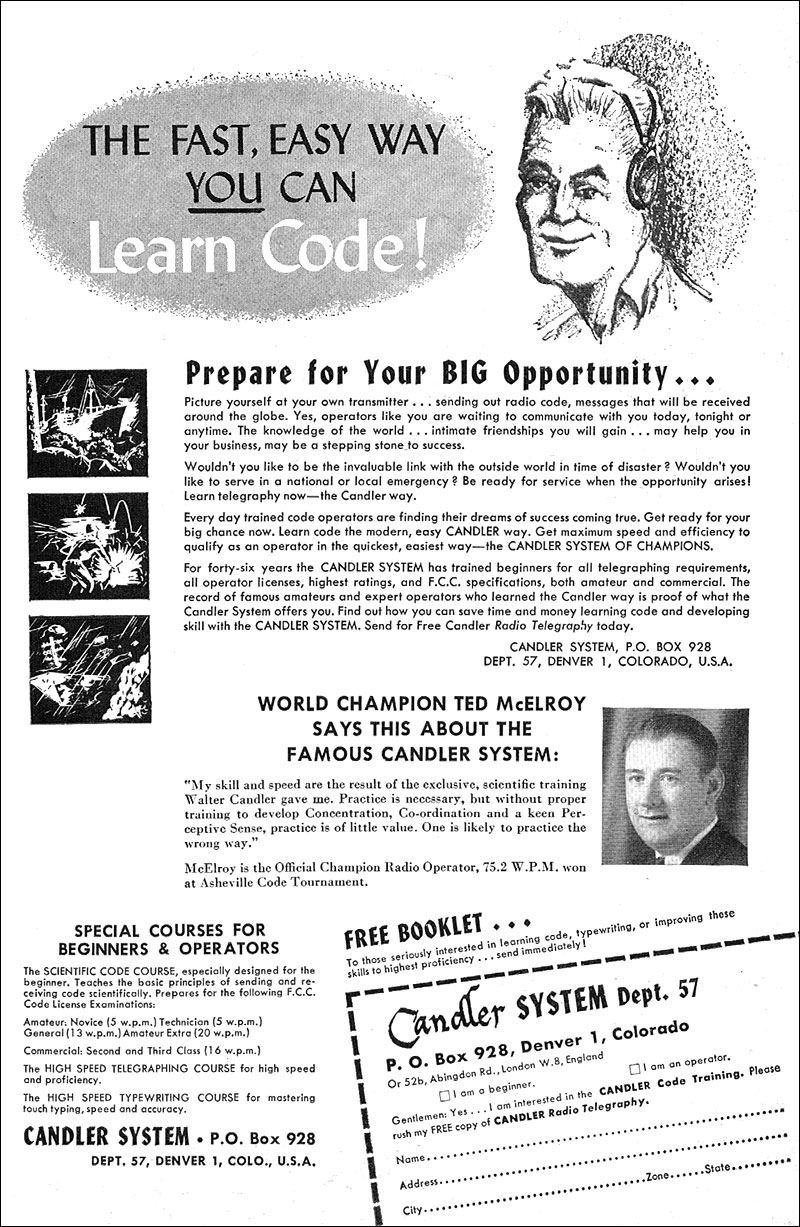
1957 Radio Amateur’s Handbook
Suggestions?
If you have suggestions on how to make the NZ Net better, or things you’d like to see covered in these updates, please contact ZL1NZ. You might even like to write something for the newsletter.
Thanks for reading, and I hope to see you soon on the NZ Net!
—
Neil Sanderson ZL1NZ, Net Manager
New Zealand Net (NZ NET)
3535.0 kHz at 9pm NZT Mon-Fri


